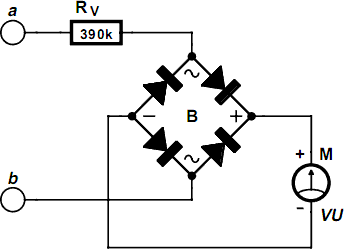
stabilizer circuit

This circuit functions as a high-quality power supply with a continuously variable stabilized output that can be adjusted to any value between 0 and 30 VDC. It includes an electronic output current limiter that effectively regulates the output current from a few milliamperes (2 mA) up to a maximum output of three amperes. This feature renders the power supply essential in an experimental laboratory, as it allows for current limitation to the typical maximum that a circuit under test may require, enabling safe powering without the risk of damage in case of faults. Additionally, there is a visual indicator to show when the current limiter is active, providing immediate feedback on whether the circuit is exceeding its preset limits.
The described circuit is designed to provide a reliable and adjustable power supply for various electronic applications. It features a voltage regulator that ensures a stable output voltage, which can be set anywhere between 0 and 30 VDC, catering to a wide range of experimental needs. The adjustable nature of the output voltage is achieved through a potentiometer that allows users to fine-tune the voltage level according to specific requirements.
The electronic current limiter is a critical component of this circuit. It is implemented using a combination of operational amplifiers and transistors, which monitor the output current and compare it to a set threshold. When the output current exceeds the predetermined limit, the circuit automatically reduces the output voltage to prevent damage to the connected load. This feature is particularly useful in laboratory settings where sensitive components may be tested, as it protects against accidental overloads.
Moreover, the visual indication of the current limiter's operation is typically achieved using an LED that illuminates when the current limiter is active. This allows users to quickly assess the status of the power supply at a glance, ensuring that experiments can be conducted with confidence, knowing that the equipment is protected.
Overall, this power supply circuit is an invaluable tool for electronics experimentation, providing both versatility in voltage output and safety through its current limiting capabilities. Its design emphasizes user-friendliness and reliability, making it suitable for both amateur and professional applications in electronics testing and development.This is a circuit for high quality power supply with a continuously variable stabilized output adjustable at any value between 0 and 30VDC. The circuit also incorporates an electronic output current limiter that effectively controls the output current from a few milliamperes (2 mA) to the maximum output of three amperes that the circuit can delive
r. This is the figure of the circuit; This feature makes this power supply indispensable in the experimenters laboratory as it is possible to limit the current to the typical maximum that a circuit under test may require, and power it up then, without any fear that it may be damaged if something goes wrong. There is also a visual indication that the current limiter is in operation so that you can see at a glance that your circuit is exceeding or not its preset limits.
🔗 External reference
The described circuit is designed to provide a reliable and adjustable power supply for various electronic applications. It features a voltage regulator that ensures a stable output voltage, which can be set anywhere between 0 and 30 VDC, catering to a wide range of experimental needs. The adjustable nature of the output voltage is achieved through a potentiometer that allows users to fine-tune the voltage level according to specific requirements.
The electronic current limiter is a critical component of this circuit. It is implemented using a combination of operational amplifiers and transistors, which monitor the output current and compare it to a set threshold. When the output current exceeds the predetermined limit, the circuit automatically reduces the output voltage to prevent damage to the connected load. This feature is particularly useful in laboratory settings where sensitive components may be tested, as it protects against accidental overloads.
Moreover, the visual indication of the current limiter's operation is typically achieved using an LED that illuminates when the current limiter is active. This allows users to quickly assess the status of the power supply at a glance, ensuring that experiments can be conducted with confidence, knowing that the equipment is protected.
Overall, this power supply circuit is an invaluable tool for electronics experimentation, providing both versatility in voltage output and safety through its current limiting capabilities. Its design emphasizes user-friendliness and reliability, making it suitable for both amateur and professional applications in electronics testing and development.This is a circuit for high quality power supply with a continuously variable stabilized output adjustable at any value between 0 and 30VDC. The circuit also incorporates an electronic output current limiter that effectively controls the output current from a few milliamperes (2 mA) to the maximum output of three amperes that the circuit can delive
r. This is the figure of the circuit; This feature makes this power supply indispensable in the experimenters laboratory as it is possible to limit the current to the typical maximum that a circuit under test may require, and power it up then, without any fear that it may be damaged if something goes wrong. There is also a visual indication that the current limiter is in operation so that you can see at a glance that your circuit is exceeding or not its preset limits.
🔗 External reference





